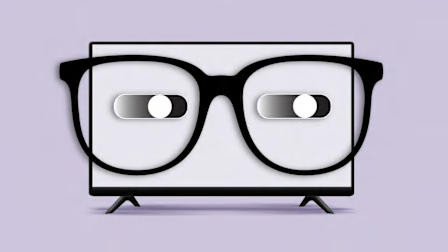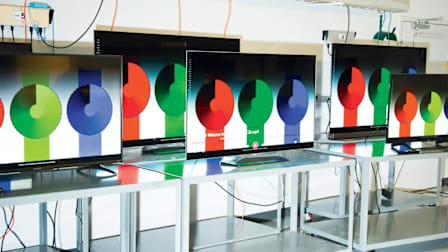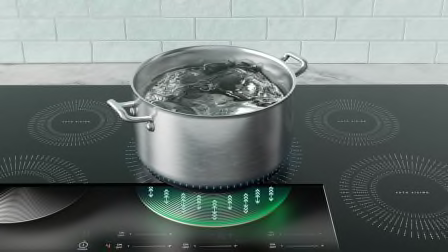NextGen TV Is—Finally—Bringing Better Picture and Sound to Antenna Users
Over-the-air TV broadcasts using the ATSC 3.0 standard are rolling out, promising features like replays, pausing, and eventually video on demand
When you shop through retailer links on our site, we may earn affiliate commissions. 100% of the fees we collect are used to support our nonprofit mission. Learn more.
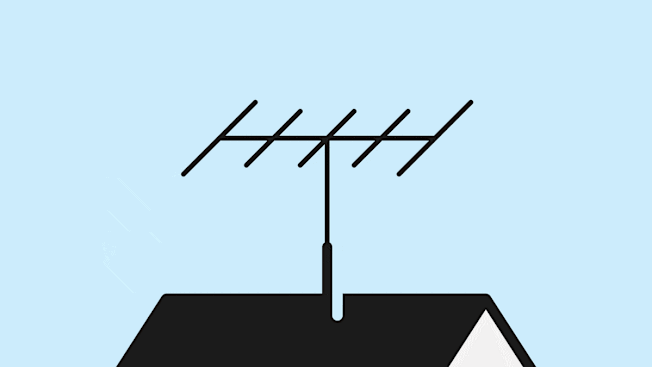
One of the great things about this past Summer Olympics coverage—apart from the compelling competition and the U.S. team’s gold medal tally—was that NBC offered 24/7 coverage of the events in high dynamic range (HDR), enabling brighter, more vibrant images with greater contrast and richer colors.
We’ve been able to watch movies and programs in HDR via streaming services for a number of years now. But this year, for the first time, you could get the Olympics in HDR even if you were using an antenna. And that was just the start of big changes coming to over-the-air TV, thanks to a new over-the-air standard. It’s technically called ATSC 3.0, but the industry is marketing it as "NextGen TV."
The new technology has been promised for years—I wrote about NextGen TV in 2017—but it’s finally gathering steam. The technology can deliver brighter, sharper pictures; improved sound; and enhanced emergency notifications. It also allows for two-way interactivity, enabling features such as video on demand, the ability to pause or go back to the beginning of shows, and hyper-local content such as local sports and weather reports.
Why Is There a New Over-the-Air Standard?
When the current over-the-air broadcast standard—technically called ATSC 1.0—was developed more than two decades ago, few envisioned a world where higher-than-high-def TV signals would become commonplace and people would expect to get the same content on smartphones and tablets that they do on a TV at home.
ATSC 3.0 is designed to bring over-the-air TV broadcasts up to date. It was developed by the Advanced Television Systems Committee (ATSC), the same international group of broadcasters, TV manufacturers, and other tech companies that established the HDTV technical standards in force today.
We’ll get into the specifics below, but in general, NextGen TV is a more advanced, secure way of broadcasting. The idea is for you to get improved image quality and better sound, while broadcasters get greater flexibility in how they allocate their available bandwidth, to improve reception, provide higher-quality audio and video, and/or offer more channels.
How Is NextGen TV Different?
There are a few big differences between our current ATSC 1.0 broadcasts and the new ones that are part of ATSC 3.0. One key element is that the new standard uses the Internet Protocol (IP), so NextGen TV signals can carry internet content alongside traditional TV broadcasts.
This will allow for interactive features such as video on demand, pausing or restarting shows, or even TV plans that combine live over-the-air channels with streaming services. Because broadcasters can multicast several video options over a single channel, you might be able to choose different camera angles during a live concert or sporting event.
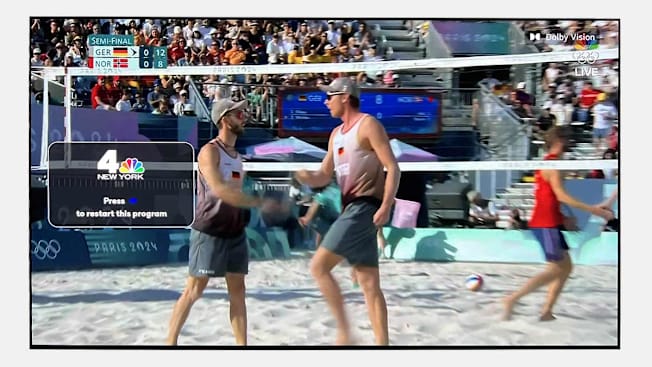
Photo: Consumer Reports Photo: Consumer Reports
Some of these features have started to roll out. Several NBC-owned stations will now let you pause and restart NBC shows and Telemundo programs in real time, and get localized news and weather pop-ups on your TV screen. However, most of the NextGen TV broadcasts you’ll see are basically what was already being sent via ATSC 1.0. We’re still in the early stages of the NextGen TV rollout.
NextGen TV is also capable of delivering 4K TV shows and movies with HDR content—the two biggest selling points in TVs right now. It supports a wider gamut of colors, as well as higher frame rates—up to 120 frames per second. That can help make fast-moving programming, such as sports, appear smoother with less blurring.
Right now, however, programs like the Olympics are being shown in 1080p HD with HDR, not in 4K. That’s because broadcasters have limited capacity, and 4K signals take up a lot of bandwidth."We couldn’t launch every single feature on day one, so we focused on a few key things that we believe the consumer really cares about, and HDR was one of those features,” Anne Schelle, managing director of Pearl TV, says. “HDR doesn’t take up a lot of bandwidth, so launching with 1080p with HDR worked better for broadcast TV."
NextGen TV can also provide better audio, including support for 7.1.4-channel Dolby Atmos immersive audio. It can include a dialogue enhancement technology called Voice+ to help TV viewers hear onscreen conversations better, while a Real Time Loudness Leveler can help keep the volume levels of ads consistent with TV programs.
NextGen TV will also help broadcasters in a few ways. One example is that in markets that currently have limited over-the-air capacity for ATSC 3.0 broadcasts, the broadcasters can transmit additional channels using over-the-air internet technology. That happened last year in Miami, when there wasn’t room for PBS’s over-the-air broadcasts. Instead, that channel is being delivered via the IP portion of the signal, and integrated into the viewer’s program guide, just like every other available channel.
It also means that local stations can offer enhanced programming, such as hyper-localized news, sports, and weather based on your ZIP code; video on demand; and broadcasts of live events (including pay-per-view). Viewers could have the option to shop while watching programs or movies, or see targeted ads geared toward their specific interests.
Will Everything Still Be Free?
The short answer is yes—and no. Over-the-air broadcasts have always been free—buy an antenna and you are done. And antenna users will continue to enjoy major broadcast networks free of charge.
"ATSC 3.0 is built on a foundation of free over-the-air TV, a key element of every broadcaster’s mission to serve their communities," ATSC president Madeleine Noland tells Consumer Reports. "But the standard also provides an avenue for future subscription or pay-per-view options for special programming."
For example, broadcasters could offer premium content, or live pay-per-view events, for a subscription or fee. They could charge extra to get 4K video, like some streaming services, including Netflix. Right now, these are only capabilities; no broadcaster has yet rolled out premium offerings like those, even on a trial basis.
Consumer Reports and other groups say they will insist that consumers continue to have access to free over-the-air high-definition TV reception. That’s part of an overall push to ensure that the Federal Communications Commission holds broadcasters to the same public interest obligations with ATSC 3.0 broadcasts they had with ATSC 1.0.
Where Is NextGen TV Available?
After a somewhat sluggish start, which was delayed by the COVID-19 epidemic, NextGen TV is now available in most major markets in the U.S.
You can see the cities where NextGen TV is currently available, plus those markets where it’s coming soon, on the NextGen TV website. You can also plug in your address and see the channels you can expect to get using an indoor or an outdoor antenna.
Do You Need a New TV to Watch NextGen TV?
To receive NextGen TV signals, you’ll need a TV with an ATSC 3.0 tuner. These tuners are built into some TVs from brands such as Hisense, LG, Samsung, Sony, and TCL. More than 100 models now include a NextGen TV tuner, but many less expensive sets—and most smaller sets—still lack one. In addition, LG has stopped including ATSC 3.0 tuners in its new TVs due to a patent dispute. (Many slightly older LG televisions do have an ATSC 3.0 tuner.)
If you don’t have a TV with an ATSC 3.0 tuner, you can buy an adapter, essentially an external tuner, to use with your current TV. Prices range from about $90 to $200 or more for models that come with a built-in DVR, but we expect they’ll drop in price as more models hit the market.
Here are three 65-inch 4K models in our current TV ratings that did well in our tests and include a NextGen TV tuner.
Will You Need a New Antenna?
Simply put, no. While we expect some companies to market their antennas as "4K" or "NextGen" models, the good news is that you don’t need a special antenna; any TV antenna that does a decent job of receiving over-the-air signals will be able to receive NextGen TV signals. We were able to pull in all the available NextGen TV signals in our area using several different models.
Do You Need an Internet Connection?
While NextGen TV is billed as the convergence of TV and the internet, you don’t have to have an internet connection to receive over-the-air NextGen TV signals. Many NextGen TV stations are encrypting their signals—they argue it’s needed to protect against piracy, not to limit viewing or recording—but all NextGen TVs should be able to decrypt these signals without the set being connected to the internet.
However, some external ATSC 3.0 tuners require a connection for security and/or program guide data, so check before buying if your home doesn’t have internet access.
When Will ATSC 1.0 Broadcasts End?
There’s no firm timetable. The FCC and the National Association of Broadcasters have formed a “Future of TV Initiative” to help manage the transition from ATSC 1.0 to 3.0, which includes the sunsetting of 1.0 broadcasts.
The FCC has also instituted a “substantially similar” rule to protect consumers. It basically requires that whatever is transmitted on ATSC 3.0 be “substantially similar” to what’s available on ATSC 1.0. That means people using the older technology won’t see their choices or the quality of their broadcasts degrade, though, of course, options like pay-per-view movies won’t be available if you’re using the older equipment. That rule will remain in place through 2027, but ATSC 1.0 broadcasts will continue beyond that date.
One question is whether the government will offer a program for consumers to help cover the cost of converter boxes or adapters, much as it did back in 2009 when TV broadcasts went all digital.
But if you’re currently receiving ATSC 1.0 broadcasts, you should have several more years to enjoy them before you’re forced to make the jump to NextGen TV. And by then, it’s possible that the majority of all new TVs will come with an ATSC 3.0 tuner.

















